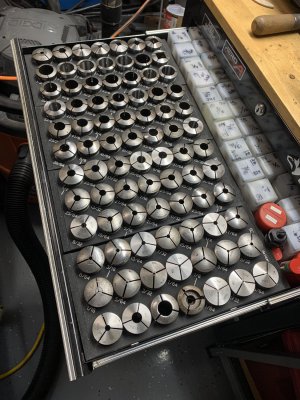- Joined
- Jun 13, 2022
- Messages
- 4
I just bought a mixed lot of 5C and R8 collets at a shop closing auction, hoping to fill out some of the missing sizes at a local non-profit makerspace that's trying to get a small machine shop up and running. The collets are pretty rough, some with a little bit of rust, most of them with such a thick coating of ... shop crud... on the nose that I can't even read the sizes.
Any advice for cleaning them in a safe way?
I've got a small ultrasonic cleaner that I've used on parts and hand tools before, but I've always just used water and Dawn and then air-dried and oiled afterwards to prevent rust. There's no way I'm going to be able to oil the inside of an R8 collet...
Any advice for cleaning them in a safe way?
I've got a small ultrasonic cleaner that I've used on parts and hand tools before, but I've always just used water and Dawn and then air-dried and oiled afterwards to prevent rust. There's no way I'm going to be able to oil the inside of an R8 collet...



 I found out the hard way .
I found out the hard way .